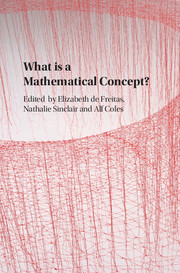14 - Ideas as Species
from Part VII
Published online by Cambridge University Press: 26 July 2017
- Type
- Chapter
- Information
- What is a Mathematical Concept? , pp. 237 - 250Publisher: Cambridge University PressPrint publication year: 2017
References
- 1
- Cited by



